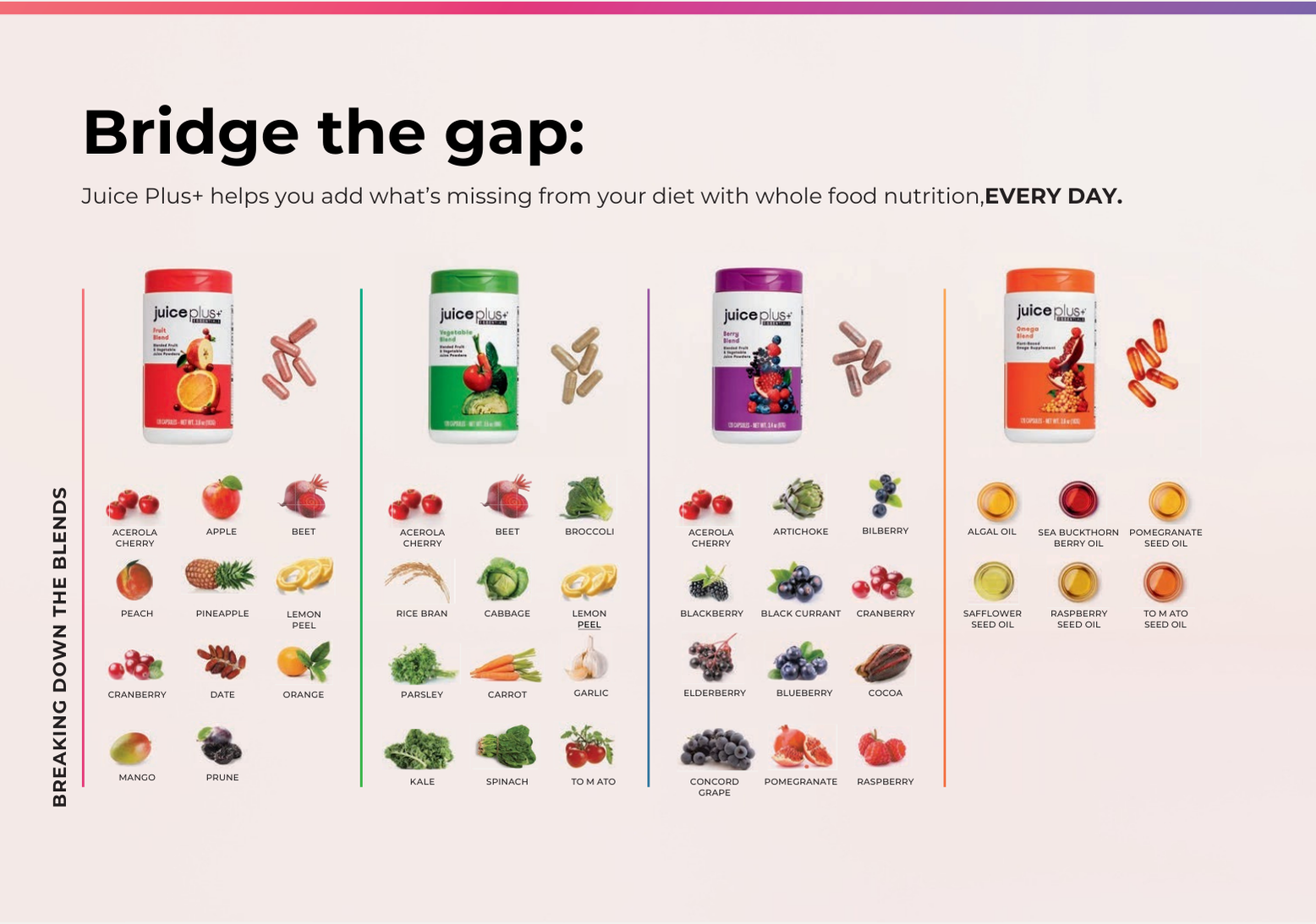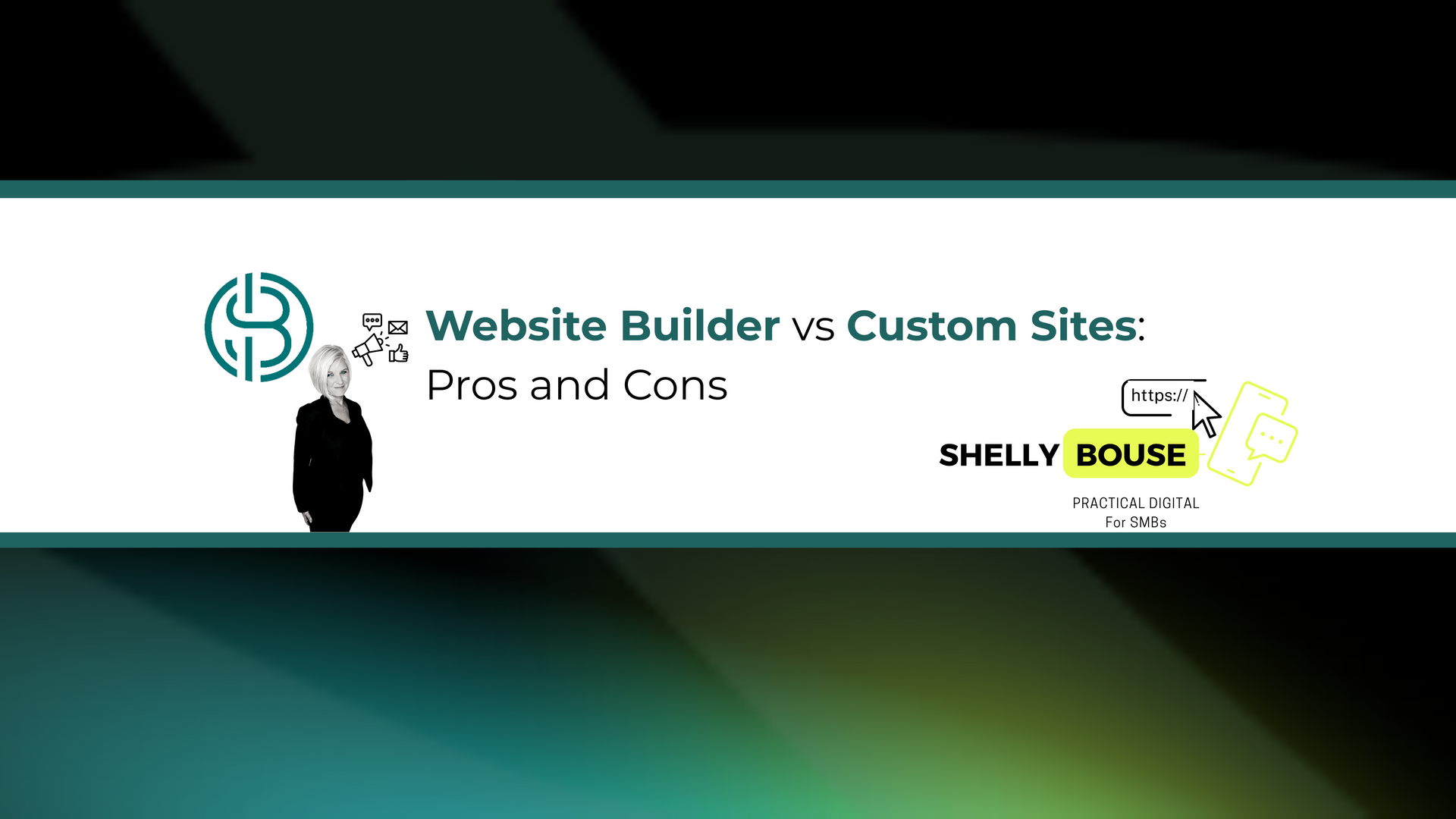Begin Your Content Marketing Journey Today
Shelly Bouse • April 14, 2025
How to Start Your Content Marketing Journey in 2024


In the world we live in today, filled with digital stuff everywhere, content marketing is super important if you want to do well in digital marketing. It doesn't matter if your focus is on selling to other businesses (B2B) or directly to customers (B2C), using
content marketing
can really help get your brand out there, grab the attention of people you want to reach and even get some leads. But it's easy to feel a bit lost because there are so many different things and ideas floating around about how best to do it. Incorporating content marketing into your overall digital marketing strategy is crucial for success in today's digital world, and it's a journey that every brand should embark on.
To make things easier for everyone trying to figure out content marketing, I've put together a list of the top blogs and websites that talk all about content marketing that you should definitely check out in 2024. These places are packed with useful advice from industry experts who know what they're talking about when it comes down to trends in our industry, creating good stuff people will read or watch, sharing this material far and wide across different platforms; basically everything related including measuring how successful your efforts have been as well as planning what steps take next. These resources, curated by industry experts, offer valuable insights and tips for anyone starting their content marketing journey.
So whether you're just getting started on making sense of all this or already knee-deep into improving strategies that exist but could be better – these blogs offer tons of valuable insights which might give an edge over others by keeping up-to-date with latest happenings before anyone else does. Let’s jump right into finding out which ones are must-follows for staying ahead game come 2025!
To make things easier for everyone trying to figure out content marketing, I've put together a list of the top blogs and websites that talk all about content marketing that you should definitely check out in 2024. These places are packed with useful advice from industry experts who know what they're talking about when it comes down to trends in our industry, creating good stuff people will read or watch, sharing this material far and wide across different platforms; basically everything related including measuring how successful your efforts have been as well as planning what steps take next. These resources, curated by industry experts, offer valuable insights and tips for anyone starting their content marketing journey.
So whether you're just getting started on making sense of all this or already knee-deep into improving strategies that exist but could be better – these blogs offer tons of valuable insights which might give an edge over others by keeping up-to-date with latest happenings before anyone else does. Let’s jump right into finding out which ones are must-follows for staying ahead game come 2025!


Understanding Content Marketing
For content marketing to work well, you need a clear plan that matches your business goals and speaks directly to your intended crowd. This plan should cover how you'll make content, share it out there, promote it, and check if it's working. With a strong strategy for content marketing in place; businesses can really engage their audience effectively and achieve their goals through valuable content. By creating and sharing valuable content, businesses can establish themselves as thought leaders and build trust with their audience, ultimately leading to growth and success.
What is Content Marketing?
With content marketing, the aim isn't to push your products or services straight away. Instead, it's about getting your brand known out there by being helpful or entertaining. By doing this well, you can show off how much you know in your field and make folks trust you more. Over time, this helps more people notice your brand which makes customers stick around longer and even leads to more sales down the line.
The Importance of Content Marketing in Today's Digital World
On top of that, when it comes to finding new leads, content marketing is extremely helpful. By putting out good content that fixes an issue or tackles something tough someone’s facing, companies can draw in folks who are on the lookout for answers or solutions right now. This smart way of drumming up business doesn't just bring in better-quality leads, but also makes customers' experiences smoother, especially for those in key decision-making roles like Chief Marketing Officers. With content marketing, companies can specifically target and attract decision makers by discussing topics that are relevant to their role and offering access to exclusive reports on industry benchmarks that would interest them. This helps improve lead quality and ultimately leads to better business outcomes.
By keeping up with what's new through regular posts and shares, businesses can show they're on top of things in their field. This helps them be seen as leaders with fresh ideas ahead of others which boosts how much people trust and recognize their brand.
Preparing for Your Content Marketing Journey
Having someone skilled in content creation or even a whole team is super important too. A marketer focused on this area takes care of planning out the strategy for content, making sure whatever gets created grabs attention and connects well with people while also keeping an eye on how successful these efforts are. With a dedicated person or team focusing on this part ensures everything stays on track towards meeting your business goals.
On top of having someone take charge of creating great material; having the right tools at hand plays a big role as well. Tools related to SEO (Search Engine Optimization), platforms where you can see how things are performing analytics-wise; plus systems that help manage all your materials smoothly - these are crucial in helping boost up what you create so more folks find it easily online while also making managing everything much simpler.
Essential Tools and Resources for Content Marketers
- For SEO: Using things like SEMrush, Moz , and Ahrefs is great because they help get your content seen more on search engines by finding good keywords and keeping track of where you stand.
- With Google Analytics : This tool gives you the scoop on how your site's doing by showing where visitors come from, what they do while there, and if they're turning into customers or followers. It’s super helpful for seeing if what you’re doing is working.
- When using CMS platforms such as WordPress or Hubspot : These sites are lifesavers because they let you put up articles easily with cool templates that look professional without needing to be a tech whiz thanks to their simple setups.
- In terms of making content: Canva makes designing easy even if art isn’t your thing; Grammarly catches those sneaky typos; Hemingway Editor keeps sentences clear - all ensuring whatever you create looks its best before going out into the world.
- And don't forget about social media management tools like Hootsuite or Buffer which save tons of time scheduling posts across different platforms so more eyes see them while also letting us know how we're doing engagement-wise through analytics features.
By getting these types of aids under your belt, you'll find managing everything way smoother, enabling better quality work, and ultimately pushing forward successful content marketing efforts with improved SEO , smarter use of Google, higher rankings, engaging social media strategies, and effective results overall.
Identifying Your Target Audience
Understanding who you're talking to is very important in content marketing. Think of your target audience as the group of people who really need what you're selling and are most likely going to buy it. To get their attention, first, you've got to figure out what they like, what they need help with, and what grabs their interest. This involves conducting thorough audience research, using tools like Semrush's One2Target, to gather data and insights on your target audience's preferences and behaviors. Don't rely on assumptions or guesswork when it comes to understanding your audience - use real data from audience research to inform your content marketing strategy.
With this in mind, start by putting together buyer personas. These are basically made-up profiles that represent your dream customers. Include stuff like where they live (demographics), what gets them excited (interests), why they might want your product (motivations), and any problems they’re facing that you can solve (challenges). This step makes sure the things you write or create speak directly to them.
On top of all this, finding your special spot in the market – that's called a niche – is key too. When you zero in on a specific area no one else covers quite like you do; it sets up apart from everyone else trying to grab attention online. By being an expert here and focusing on creating content just for your target audience, such as podcasters, you can increase how much people interact with your work which then leads more often than not into sales.


Step-by-Step Guide to Launching Your Content Marketing Strategy
- With Step 1: Setting Your Content Marketing Goals - Think about what you're aiming for with your content marketing work. It might be making more people aware of your brand, getting leads, or boosting sales. Make goals that are clear and measurable and make sure they fit well with the bigger picture of your marketing plans.
- For Step 2: Developing a Content Calendar - Put together a calendar for when to create and share content. This helps keep things steady so that your audience always gets something useful from you while keeping up a consistent image of who you are as a brand.
- In Step 3: Creating Engaging and Relevant Content - Work on making content that matters to the people you want to reach out to. Mix it up with different kinds of posts like blogs, videos, infographics, and podcasts depending on what they like best.
- By moving onto Step 4: Promoting Your Content Across Different Channels - Figure out how best to get your content seen by using various ways such as social media buzzes, email blasts or teaming up with influencers . Adjust how you promote based on where it’s being shared for maximum impact.
- Through step 5: Measuring And Analyzing Performance Of the your content using Google Analytics or similar tools to see how well things are going like checking website visits , how much people interact with what you post and if they’re buying anything because of it .This info helps tweak future efforts so you can make improvements.
Following these steps will help lay down the groundwork for an effective strategy in reaching those important goals through smartly crafted emails, blogs, and other forms created specifically targeting potential customers which could lead towards greater awareness about one's business online leading ultimately towards success in their respective markets
Step 1: Setting Your Content Marketing Goals
When figuring out what your content marketing goals are, think about:
- ROI : You'll want to figure out how to tell if the time and money you put into content marketing is paying off. This might mean looking at things like how many people visit your website because of it, whether sales go up or down if more customers come on board for less cost.
- Marketing campaigns: Pinpoint which particular projects or plans will get a boost from your content. Say there's a new product coming out; maybe one goal could be making more people aware of it so they start using it.
- Key performance indicators (KPIs) : Decide on some clear signs that show whether all this effort was worth it. It could be anything from more visits to your site, better engagement with whatever you post online, getting more leads or even just having more folks follow along on social media platforms.
By setting these kinds of detailed yet achievable targets right from the start ensures everything else falls into place nicely – keeping every piece of work tied back directly towards pushing forward those bigger picture objectives.
Step 2: Developing a Content Calendar
To kick things off with your content calendar, think up ideas that will catch the interest of the people you want to reach and match what you're trying to achieve with your marketing. Look into what bothers them, grabs their attention or makes them curious. Your aim should be crafting information that's useful and directly speaks to their needs, ultimately helping to improve brand awareness. This step is crucial in developing a successful content marketing strategy, as it helps establish your company as an industry leader and increases conversions by creating a strong brand awareness.
Then comes figuring out how often you want to put something new out there - it could be every day, once a week or maybe just monthly. What matters most is picking a pace you can keep up with while making sure there’s always something new for folks to check out.
In wrapping things up for your content schedule, assign each topic its own time slot and decide on how it’ll be presented. By doing this organization bit well in advance ensures everything runs smoothly without any hitches ensuring continuous delivery of fresh content tailored specifically towards engaging your target audience effectively.
Step 3: Creating Engaging and Relevant Content
At the core of a winning content marketing game plan is making content that grabs and keeps people's interest. If you want to hit the mark with your audience, here are some smart moves:
- Kick off by giving something useful. Your work should tackle what bothers your crowd or fills a gap they have. Share insights, advice, how-tos, or updates on what's new and important in their world.
- With every piece you put out there, aim to teach them something valuable. Back up what you say with data from studies or examples from real life to build trust.
- Bringing stories into your writing can really pull readers in and stick with them longer than just facts would. Craft tales that touch their hearts or stir up feelings.
- Since everyone likes different things, mix it up! Try blogs for those who love reading at their own pace; videos for folks who'd rather watch; infographics for quick learners; podcasts if listening is more their thing; even quizzes for a bit of fun interaction.
- Don't forget about SEO : Sprinkle relevant keywords throughout so search engines know where to find your content when someone’s looking online.
By sticking to these pointers, not only will you catch the eye of those you're trying to reach but also keep them coming back while setting yourself apart as a go-to source in your field.
Step 4: Promoting Your Content Across Different Channels
Getting your content out there is key to making sure the right people see it and interact with it. Here's how you can spread the word through various channels:
- With social media marketing, post your content on platforms like Facebook, Twitter, Instagram, and LinkedIn. Make sure what you say fits each platform well and get folks to share and talk about what you've posted.
- Through email marketing, send messages about your content to people who already follow you. Break down your email list so everyone gets something they're interested in.
- By teaming up with influencers or big names in your field, their followers can learn about what you do too. Their experience helps make more people aware of your brand which could lead them to check out what you offer.
- Content syndication means putting what you create on other sites or blogs beyond just yours. This might be writing a guest blog post or getting involved with websites that share similar topics.
- SEO optimization is all about making sure search engines pick up on keywords related to what’s important for others when searching online; this includes using specific words that match searches as well as tags that describe images or ideas clearly.
By following these steps for promoting content effectively across different areas such as email, social media, reaching the target audience becomes easier while also boosting visibility via methods like SEO (search engine optimization) ensuring more engagement from potential customers.
Step 5: Measuring and Analyzing Your Content's Performance
To really know if your content marketing is hitting the mark, it's super important to check out how it's doing and figure out what you can do better. Here are some steps to help you see how well your content is performing:
- Start by using tools like Google Analytics. These can show you a bunch of useful metrics like how many people visit your website, how long they stick around, whether they're clicking on things or just leaving quickly (that’s bounce rates for you), and if they’re actually doing what you hope they would do after reading your content.
- Keep an eye on search results. It’s crucial to see where your content lands in search engine rankings because that tells you a lot about its visibility online. Make sure your articles use the right keywords so more folks find them when searching for topics related to what you write about.
- Don’t forget to track conversions! This means figuring out whether people are taking action—like buying something or signing up—after checking out your content. Knowing this helps understand if all those words are convincing enough.
- Pay attention to engagement metrics too: Look at details such as time spent on page, scroll depth (how much of an article someone reads), and social media shares. This info gives clues about which parts of your work keep readers interested—and which parts might need a bit more spice.
To improve your content strategy and overall content marketing efforts, regularly monitor these key aspects:
- Use Google Analytics to track website performance
- Monitor your search engine rankings, especially on Google
- Track conversion rates for your content
- Analyze engagement metrics from social media interactions
By consistently reviewing these metrics, you can refine your approach to creating impactful content. This data-driven strategy will help you enhance the effectiveness of your content marketing across all channels.


Types of Content That Drive Engagement
To grab your audience's attention and keep them interested, it's smart to mix up the kind of content you're putting out there. Here are a few kinds that really get people involved:
- With blog content , if you write posts that give folks useful info, insights, or tips in a well-written way, you can pull in and hold onto the interest of the people you want to reach.
- For video content: It grabs attention like nothing else and is great for showing complicated ideas or feelings in an easy-to-understand way. Think about making how-to videos, showing off what your product does,, or taking viewers behind the scenes.
- On infographics : They look good and make hard-to-grasp information easy for everyone to understand. Plus they’re perfect for sharing on social media platforms because they catch eyes easily.
- Regarding podcasts : They've become super popular for telling stories or diving deep into industry knowledge. Podcasts let you have real conversations which helps build a connection with listeners.
- About interactive content : Things like quizzes, polls,, and surveys not only draw people in but also get them to join in by giving their views.
Mixing these types of stuff into how you market through content lets you snag your audience’s focus,, boost involvement, and leave a lasting impression with what makes your brand special.
Blogging as a Powerful Tool for Engagement
When it comes to making blog posts, knowing who you're writing for and what they need is key. Dive into research on topics and keywords tied to your industry, aiming to deliver content that adds real value for those reading.
A well-crafted blog can naturally pull visitors towards your site while boosting how high up you appear on search engine results. Keeping up the flow of top-notch articles will not only keep readers coming back but also shine a spotlight on your brand. By utilizing proper grammar and writing techniques, your blog can stand out as a reliable source of information. And by sharing these posts through social media platforms, you expand their reach even further, encouraging more interaction from various corners of the internet.
Leveraging Social Media for Content Distribution
To make the most of social media for spreading your content around, it's key to know who you're trying to reach and pick the right places where they hang out. You should put together posts that grab their attention and make them want to share or talk about what you've got going on.
On top of putting out your own material, it's just as crucial to chat with those who follow you and jump into conversations that matter. When you build a solid group of supporters who really dig what you do, they help spread the word even further which is awesome for making sure more eyes see your work.
The Rise of Video Content in Marketing Strategies
With video content, you can show off what you're talking about in a lively and interesting way. Whether it's showing how something works, letting happy customers talk about their experiences or teaching something new - adding videos to your marketing mix makes everything more engaging for the people watching.
To make sure your video hits the mark, first figure out who exactly you want to watch it and what they like. Keep your videos short but sweet to keep viewers hooked. And don't forget: use keywords that matter so folks can find your stuff easily online, such as in YouTube videos. Also, spreading the word on social media helps a ton – encourage everyone to share! Incorporating YouTube videos into your content marketing strategy is crucial in today's digital landscape. By utilizing keyword research and understanding your target audience, you can create engaging and shareable content that drives views, engagement, and website traffic.
Infographics and Visual Content for Easier Consumption
Using pictures and designs, like infographics, is a great way to share complicated stuff in a simple way that's easy for everyone to get. Infographics mix up pictures, words, and numbers to show information in an attractive and fun manner.
They're really good at breaking down steps, showing off facts or making hard ideas easier to understand. You can put them on social media platforms, include them in your blog posts or just use them by themselves.
When you want to make an awesome infographic, first figure out what you're trying to say. Pick the most important bits of info you need people to know. Choose images, colors and fonts that fit with who you are but also make everything clear as day. There are tools online and fancy design programs that can help with this.
Adding infographics along with other kinds of picture-based content into your strategy for reaching out through content marketing means more folks will notice what you’re saying—and they'll remember it too.
Enhancing Your Content with SEO Best Practices
SEO , or search engine optimization, is super important when you're creating content marketing. By making your content friendly to search engines, you can climb up the organic search rankings and get noticed by more of the people you want to reach.
At the heart of good SEO is knowing all about keywords. You've got to figure out which words folks are using when they look for stuff online that's like what you offer. Then, sprinkle those keywords throughout your content—think titles, headings, and even in the descriptions that show up in searches.
But there's more to it than just throwing in a bunch of keywords. You need to create really good information that people actually want to read or watch because it matters to them. Linking inside your own site (that’s internal links) as well as linking outwards (those are external links) helps give more info and shows your work is trustworthy. And don't forget: keeping things fresh with regular updates makes sure your content stays relevant over time.
Understanding Keywords and Their Importance
By utilizing a reliable SEO tool and doing thorough key phrase research, you can identify both competitive and non-competitive key phrases that your target audience is using. This will allow you to create content that is not only useful and interesting, but also optimized for search engines using a powerful seo tool.
To start finding the right keywords, think about what topics matter in your field. Then, use tools designed for keyword research to spot popular ones related to those topics. Aim for keywords lots of people are searching for but not many sites are covering.
After picking out your main keywords, weave them smoothly into what you write. This means putting them in headings, titles, and all through your articles or posts without overdoing it—too much cramming can actually hurt how high up you appear in search results.
By getting a good grip on which keywords matter and adding them thoughtfully into what you create, you'll climb higher in search engine rankings and pull more visitors naturally towards your site.
Optimizing Your Content for Search Engines
First off, with keyword research, figure out what words or phrases folks who might be interested in what you've got are searching for. Then, use those keywords throughout your content like in headings and titles but make sure it all sounds natural.
On top of that, don't forget about other bits that need optimizing too. This means having web addresses that tell you something about the page, using alt tags so images can be understood by search engines as well, and not skipping on meta tags and descriptions which help explain what each page is about.
Keep everything fresh by updating regularly; this keeps things relevant. And keep an eye on how well everything's doing with tools like Google Analytics so you can tweak things here and there based on real info.
By getting all these pieces right – from picking the right keywords related to your target audience leading them straight into improved rankings within organic searches - more of the right eyes will end up seeing your website through their google searches without having spent a dime.


Overcoming Common Content Marketing Challenges
For starters, keeping up with regular content can be tough. By making a plan and setting up a calendar for your posts, you'll have an easier time keeping things consistent. Then there’s the issue of making sure what you post is both high-quality and interesting to your readers. Doing some research on what your audience likes and updating what you've written before can help solve this problem.
Another thing that might give you trouble is figuring out if all the effort you're putting into content marketing is actually working. Using tools that show how well different parts of your strategy are doing will let you know where changes need to be made.
If you tackle these issues head-on, beating them isn't as hard as it seems, leading to a successful content marketing strategy.
Maintaining Consistency in Content Creation
To get past this, it's smart to map out a plan on a content calendar. Figure out what your audience likes talking about and set dates for when you'll share each piece of info.
Thinking about getting some help from outside, like working with a marketing agency or bringing freelance writers on board? That could make things easier by keeping the flow going without overloading your own team too much.
On top of that, setting clear rules for how your content should look and sound is crucial. This means deciding on the voice, style, tone you want to use as well as how everything should be formatted and presented visually.
By sticking to these steps for consistent content creation, you're not just filling space; you're building up your brand's identity and making sure people stay interested.
Ensuring Content Quality and Relevance
To nail down quality, dive deep into research and pull together solid info from sources you can trust. Bringing in data, case studies, and real-life examples will not only back up your points but also make everything you say more believable.
With things always changing out there—from industry trends to how people behave—it's crucial to keep updating your work so it stays fresh and useful. By keeping an eye on these shifts, you ensure that whatever you put out remains spot-on for timing and value.
Engaging with folks who read your content is another must-do. Spark conversations through comments or social media chats; pay attention when people tell you what they think or want. This feedback loop lets you fine-tune what kind of content hits home best with them.
By focusing on making sure the material is top-notch and right on target for relevance, trust grows between creators like us writers/marketers)and our readers—paving the way for a group of loyal followers.


Advanced Content Marketing Tactics
With influencer marketing, the idea is to team up with big names in your field who can help spread the word about what you're doing. By tapping into their following, you get to put your brand and messages in front of more people than before.
On the other hand, email marketing lets you keep in touch with folks directly through their inbox. It’s all about sending them emails that they actually want to read because they’re tailored just for them and packed with stuff they’ll find useful or interesting.
By adding these two approaches—email and influencer marketing—to your overall plan, you'll be able to push your content further out there than ever before.
Utilizing User-Generated Content
By getting folks to share their own stories and experiences, you can get the word out about your brand in a way that feels more real and trustworthy than regular ads. After all, we're all more likely to believe something cool our friends tell us over what a billboard says.
To get this kind of content rolling in, try setting up fun activities for your audience. You could do things like contests or giveaways, or even just ask them directly for their thoughts and stories.
When you use what they've shared with you, always remember to ask if it's okay first and then give them credit for it. This keeps everything above board and shows respect for everyone's work.
Using user-generated content helps spread the word about what you're doing far and wide while also building a community vibe around your brand.
Exploring Content Personalization
To get started with making your content feel more tailored, think about breaking down your audience into groups based on things like age, habits, or interests. This way, you can come up with content that speaks directly to each group.
By looking at data and analytics, you'll learn a lot about what your customers are into. This includes the pages they spend time on online, how they've interacted with you before, and even the things they buy. With this info in hand, you can suggest products or content that they're likely to be interested in.
Making it personal means doing simple things like using their name when talking to them through email or suggesting items that match their taste perfectly. You could use different methods such as changing parts of an email specifically for one person or setting up web pages designed just for certain visitors' interests, while also paying attention to grammar and professionalism.
Diving into content personalization helps create connections with customers by giving them experiences specially made for them—boosting happiness levels among users while also building loyalty towards brands.
Frequently Asked Questions
How Do I Start with Content Marketing with No Experience?
Jumping into content marketing might seem scary at first, especially when you're new to it. A smart move is to figure out who exactly you want your content to reach and understand what they like or need. By looking up topics and keywords that matter to them, begin crafting content that's actually useful. With the help of a chief content officer or by teaming up with a marketing agency, steering your content marketing efforts in the right direction becomes easier.
What Are the Key Metrics to Measure Content Marketing Success?
Key Metrics for Measuring Content Marketing Success
To evaluate the effectiveness of your content marketing, focus on these important metrics:
- Return on Investment (ROI)
- Engagement rates
- Website traffic
- Conversion rates
- User behavior on your site
Use tools like Google Analytics to track these metrics. This data will help you understand:
- How many people visit your website
- How often visitors take desired actions
- How engaged users are with your content
By analyzing these numbers, you can:
- Assess the performance of your content marketing efforts
- Identify areas for improvement
- Make data-driven decisions to optimize your strategy
Regularly reviewing these metrics allows you to refine your approach and ensure your content marketing efforts are achieving your goals efficiently.











